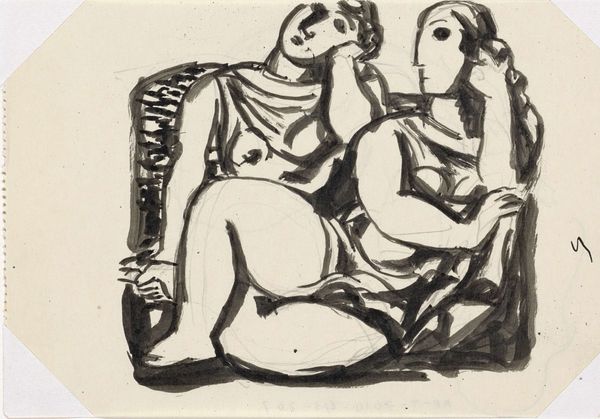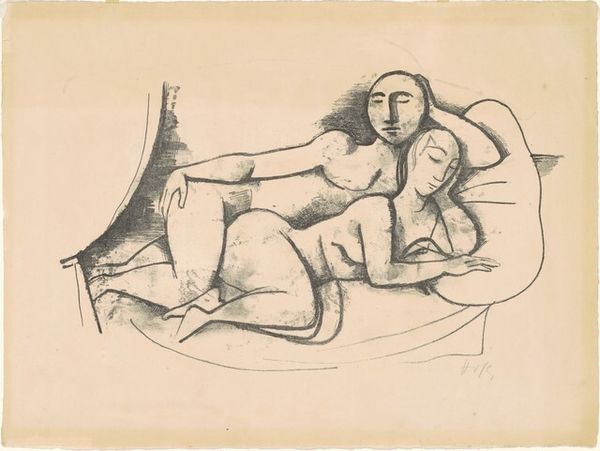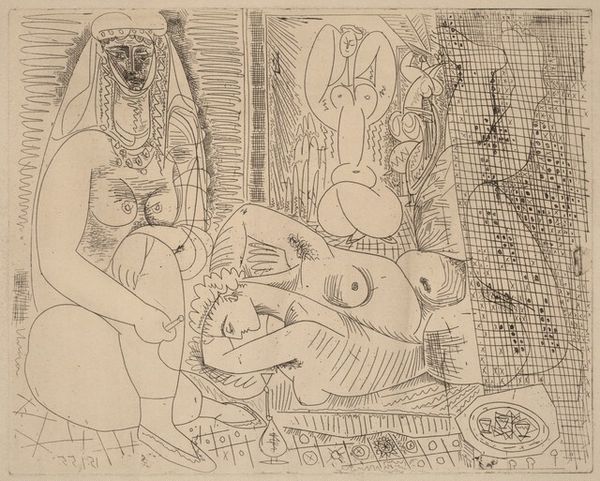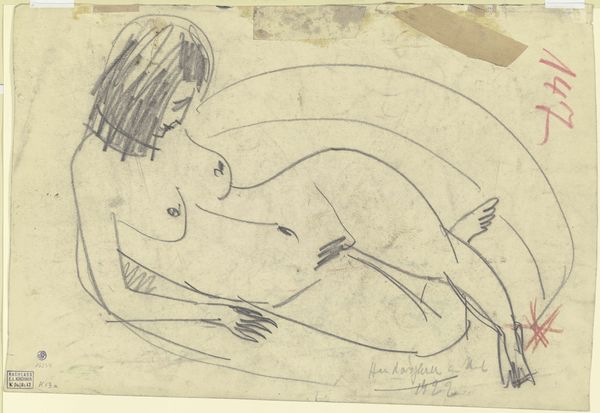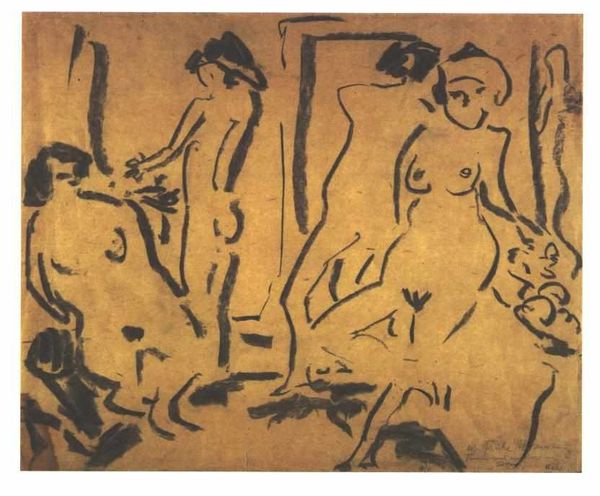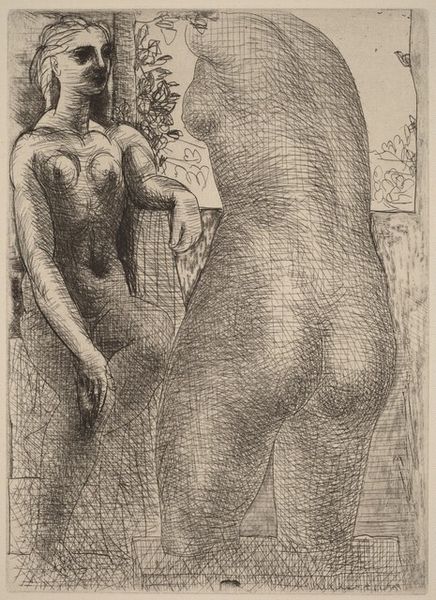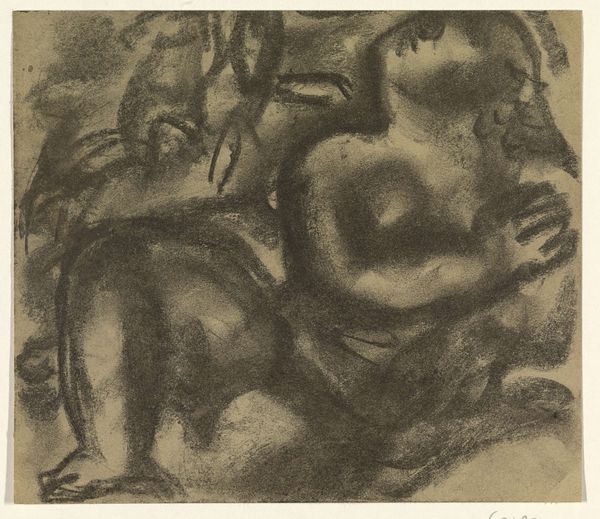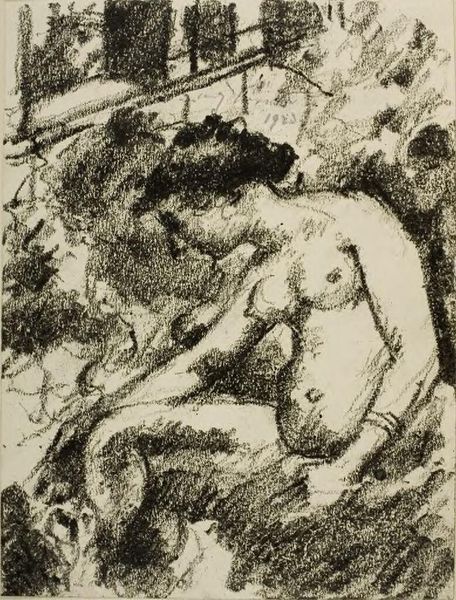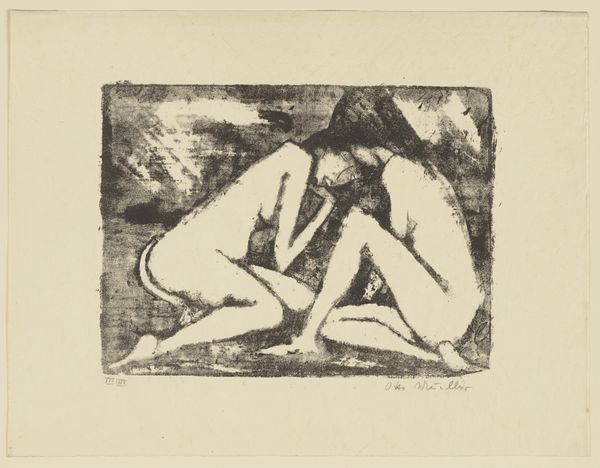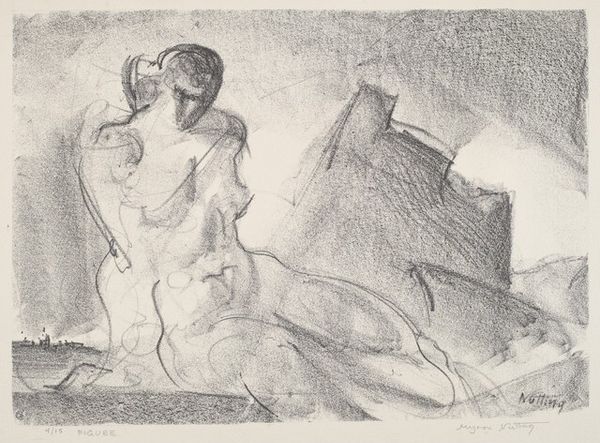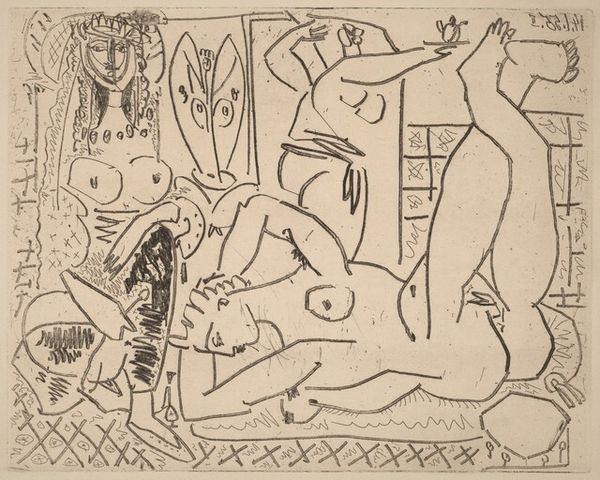
print, etching, intaglio
# print
#
etching
#
intaglio
#
figuration
#
expressionism
#
genre-painting
#
nude
#
modernism
Copyright: National Gallery of Art: CC0 1.0
Editor: Here we have Georges Rouault's "Lorsque tu dormiras, ma belle tenebreuse...", an etching and intaglio print made sometime between 1925 and 1927. It's a striking nude figure, but the heavy lines and dark tones give it a sort of somber, almost unsettling feel. What’s your take on it? Curator: This intaglio print embodies expressionism through the raw, almost crude rendering of the figure. Think about the labour involved in creating such a work; the artist's hand physically etching the plate. That repetitive, forceful act is key to understanding the final image, no? The medium isn't just a delivery system for an idea; it is central to that idea, perhaps inseparable. How does the material quality of the print affect its meaning for you? Editor: I hadn't really considered that angle. I was focusing on the figure itself and the mood it conveys. But you're right, the roughness of the lines, the stark contrast – it's all a result of the labor involved, the process of making. Curator: Exactly. Rouault wasn't just depicting a nude. He was engaging in a material conversation. The acid biting into the metal, the pressure of the press, the consumable nature of prints, and its production...These choices make an argument about artistic value itself, democratizing the artistic process but perhaps also losing an individual touch. Do you think there's tension between mass production of art, on the one hand, and making art itself a kind of manual labor, on the other? Editor: I see what you mean! I suppose I often overlook the physical aspects of creating art. Curator: Perhaps next time, you might consider how that production, materiality, distribution and its subsequent consumption alters the way we consider artistic creations? It’s so fundamental. Editor: I definitely will. Thinking about the process and materials gives it all a new dimension!
Comments
No comments
Be the first to comment and join the conversation on the ultimate creative platform.

